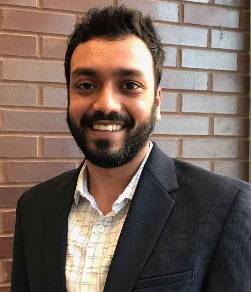Shrikant at Cleveland State University explores OPT opportunities in the US
Q: What GPA is required for the University of South Dakota?
Q: What GPA is needed to go to Ohio State?
There is no minimum GPA score for UG admission at Ohio State. However, International students must have a cumulative GPA of at least 3.0 (on a 4.0 scale or equivalent) for graduate admission. Applicants may submit a standardized test score (GRE or GMAT) if their cumulative GPA is below 3.0 for the last degree.
Q: Is it hard to get into the UTSA in San Antonio Texas?
According to various sources, University of Texas San Antonio has an overall acceptance rate of around 87% which makes it somewhat selective for international student admissions. Some of the general requirements to be considered for admission are given as follows:
- SAT/ACT scores
- Overall Student's GPA
- Letters of Recommendation
- High School Class Rank
- Additional Academic Records
Q: Is University of North Dakota good for Indian students?
The University of North Dakota is one of the top choices for international students to pursue their higher education. The UND warmly welcomes its international students as they have contributed a lot to the success of the university. Moreover, the university offers a top-notch environment, the best academic opportunities, technical & career training, etc. The university boasts over 1000 international students who represent more than 95 countries. Additionally, international students highly enjoy the facilities provided by the University of North Dakota. The UND is one of the largest research universities in the United States for international students.
Q: How much is the application fee for Alabama University?
The Alabama University application fee for International students vary by application type. Mentioned below are the application fee for UG and PG applications at Alabama:
- UG: USD 40 or INR 3,342.14
- MBA: USD 80 or INR 6,684.28
Q: Can I get into Oregon State with a 3.5 GPA?
International students must have at least a GPA between 2.5 and 3.0 on a scale of 4.0 for UG and PG admission at Oregon State. Therefore, candidates are eligible to get admission to the university with a 3.5 GPA in their academics. Oregon State University GPA requirements are different for undergraduate and graduate admission. Mentioned below is the range of GPA required for Oregon State University admissions:
| Program | Minimum GPA Required (on a scale of 4.0) |
|---|---|
| Undergraduate | 2.5 - 3.0 |
| Graduate | 2.5 - 3.0 |
Read about the Grading System in the USA
Q: What is Northwest Missouri acceptance rate?
The Northwest Missouri acceptance rate for international students is around 80%. This shows that the university follows a moderate selection criteria when it comes to admission. However, the moderate selection criteria does not imply that the university accepts every application. International students must showcase their excellent academic performance, score high GPA, submit standardized test scores and English language proficiency test scores. In addition, if a student has a history of participation in relevant extracurricular or experience, their selection probability increases by 50%.
Q: What GPA do I need to get into Northwest Missouri state?
Northwest Missouri State University expects a cumulative GPA of 2 for UG programs and 3 for PG programs on a scale of 4. GPA is one of the top factors when considering students for university admissions. Along with GPA, the university expects a student to provide high school transcripts from previously attended university or school, standardized test scores, English language proficiency test scores, and more. In addition, students with relevant experience in the chosen field are preferred over the studious students.




The University of South Dakota expects a GPA score of 2.5 from undergraduates and 3 from postgraduates on the 4-pointer scale. Along with the GPA scores, undergraduates must meet the basic eligibility and submit an ACT score of 21 or higher and an SAT score of 1070 or higher. In addition, they must submit the required documents, such as academic history, transcripts, letters of recommendation, English language scores, and more.